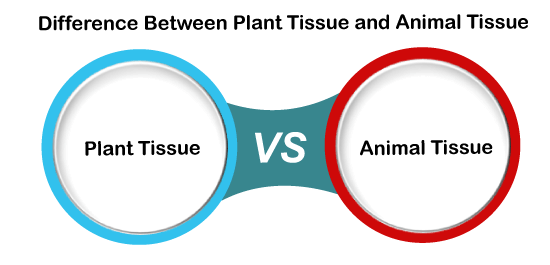Difference between Plant Tissue and Animal TissuePlants and animals are the prized possessions that we have received from nature. Plants and animals are important parts of nature. But today, there are many species of plants and animals that have become extinct due to us. We have harmed nature in certain ways for our convenience. For instance, many trees were cut down for the construction of the metro in several cities. 
Now, let us discuss about plant tissue and animal tissue. There are certain differences between plant tissue and animal tissue. Both are different in certain aspects like cell walls, tissue organization, etc. Let us look at some fundamental differences between plant tissue and animal tissue.
So, these are the key differences between plant tissue and animal tissue. Now, let us discuss plant and animal tissues in detail. Well, plant tissue is defined as the group of similar cells performing the same function. Plant tissues help the plants in creating organs like stems, flowers, roots, etc. Plant tissues are divided into two categories, i.e., meristematic tissue and permanent tissue. Meristematic Tissue results in plant growth. The cells in this tissue grow asymmetrically. Every plant cell originates from the meristematic tissue. On the other hand, the permanent tissue is further divided into simple and complex tissue. The permanent simple plant tissue is thin. This is called the epidermis. The epidermis has guard cells that regulate the amount of air and water in leaves. Parenchyma is another tissue in the plant which is responsible for undertaking the process of photosynthesis. In permanent complex plant tissue, there are xylem and phloem tissues present in the plants. Both the tissues are responsible for regulating the amount of food and nutrients and also carrying sugar to the roots and stems. Animal tissues are classified into four categories. Let us discuss them in detail.
So, these are some of the categories of plant and animal tissues. Plants and animal tissues are different and unique in their own sense. Plant tissues and animal tissues have certain differences that are already mentioned above. It is interesting to note that there are certain passages through which food, nutrients, water, and air are supplied in plants. In animals, there are no passages for that. Thus, plant tissues and animal tissues are different in their own sense.
Next TopicDifference between
|
 For Videos Join Our Youtube Channel: Join Now
For Videos Join Our Youtube Channel: Join Now
Feedback
- Send your Feedback to [email protected]
Help Others, Please Share










